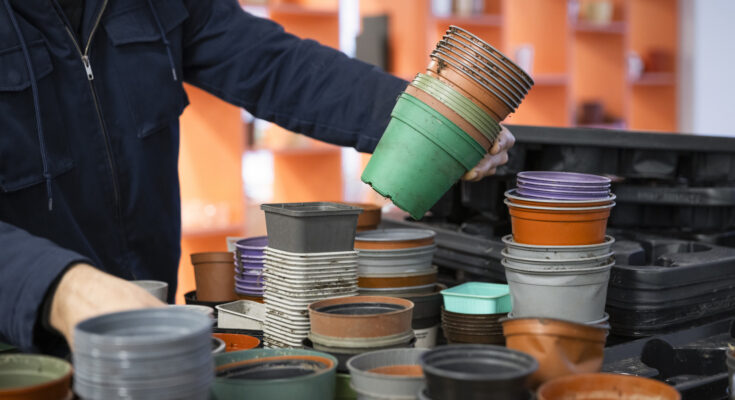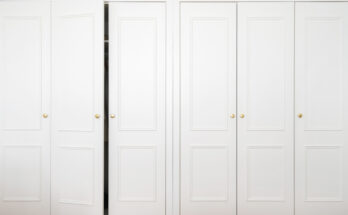Reuse Plastic Nursery Pots To Start A Space-Saving Vertical Garden
We may receive a commission on purchases made from links.
If you’re a gardener, you likely have this problem: a shed, spare room, or potting station filled with plastic nursery pots. They are, after all, what any seedling or plant you buy arrives in. While there are lots of creative ways to reuse plastic nursery pots in your garden, arguably the idea that makes the most sense (at least for an avid backyard grower) is turning them into even more gardening space. And the best way to do that is to go vertical. Plastic pots are lightweight, so hanging them from a cattle panel or fencing wire mounted to your balcony wall is simple. Alternatively, hang a painted pallet from your fence and screw planters to it. Or, stack the containers high on a length of rebar, tilt them at odd angles, and plant into the gaps.
If you’re just starting out gardening and don’t have any nursery pots lying around, ask family, friends, and neighbors who garden or post a request in your local free-cycle groups. Someone’s bound to have a stack to give away. You should be cleaning your flower pots — and sterilizing them — before using them. There’s also absolutely no shame in buying pots for your new vertical garden. Every gardener has to start somewhere! The most common sized nursery pot is a 1 gallon pot, also known in the industry as a #1 pot. Depending on your set-up, this might be too big, so consider smaller sizes. For example, a pack of 50 VIVOSUN 6 Inch Plastic Flower Plant Containers costs around $25 and each pot holds about a quarter of a gallon.
Hang nursery pots with wire or create a tower
Make a vertical garden using plastic nursery pots by running a sturdy outdoor wire, like this 100 foot roll of National Hardware Galvanized 12 Gauge Wire for about $15, along a wall, fence, or frame, held in place at regular intervals using screw-in hooks or angled nails. Drill a hole or two in the rim of each pot and hang them from the wire using ESFUN Large Heavy Duty Black Steel S Hooks — a pack of 30 costs just under $9.
Or, measure the balcony wall, patio backdrop, or area of fenceline you want to garden vertically on. Get a 50 foot roll of YARDGARD 2×3 Inch 16 Gauge Welded Wire Mesh for about $39 and attach it to a wood or metal frame made to your measurements. Hang the planters on the mesh using S hooks. If you need something small, you could get away with using lightweight hexagonal chicken fencing screwed onto a wall-mounted wooden frame or wrapped around the trunk of a big tree in your backyard.
Create a tipsy tower by stacking large pots atop each other on a length of rebar pushed deep into your lawn or garden bed. Tilt them at different angles and plant into the open spaces. If you want to get really creative, try your hand at upcycling. For example, you could turn wire lampshade frames upside down, pop a pot inside, connect them by their posts, and hang the whole arrangement from your patio ceiling.
Mount your plastic planters on wooden pallets, planks, or ladders
At the simplest, you could squeeze really small planters into the pockets of a timber pallet. However, if you want adaptability with pot sizes and placement, get some metal planter brackets, like this 24-pack of Geetery 4, 5, and 6 Inch Metal Wall Plant Holder Rings for about $48. Paint the pallet and mount or lean it on the wall or cut it into smaller sections. Screw on the brackets and add the planters. Some pallets are treated with human health-harming pesticides and chemicals. A precaution to take when using wooden pallets for your outdoor DIYs is checking for an HT mark, proving the pallet has been heat treated instead. If you’re unsure or can’t see any markings, commit to growing ornamentals, not edibles.
Alternatively, you could break the pallet apart and use the planks (or buy new wood) to create a freestanding vertical garden or feature wall of brightly painted individual wall-mounted pot holders with just a few pots each. Have basic carpentry skills? Build a wide gym ladder or window frame lookalike, lean or hang the frame against a garden wall, and hang pots from the rungs using S hooks or staple them on using a heavy duty upholstery stapler. This method gives you a lot of flexibility in how you arrange your pots. Another idea includes making a tall set of shelves to sit the pots on.



